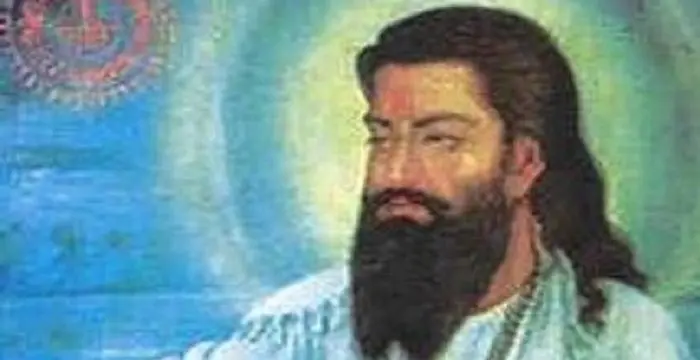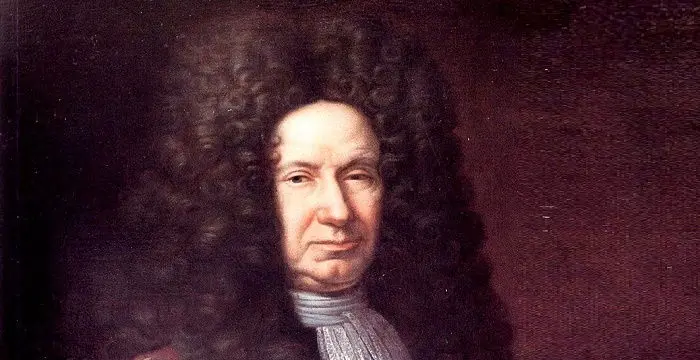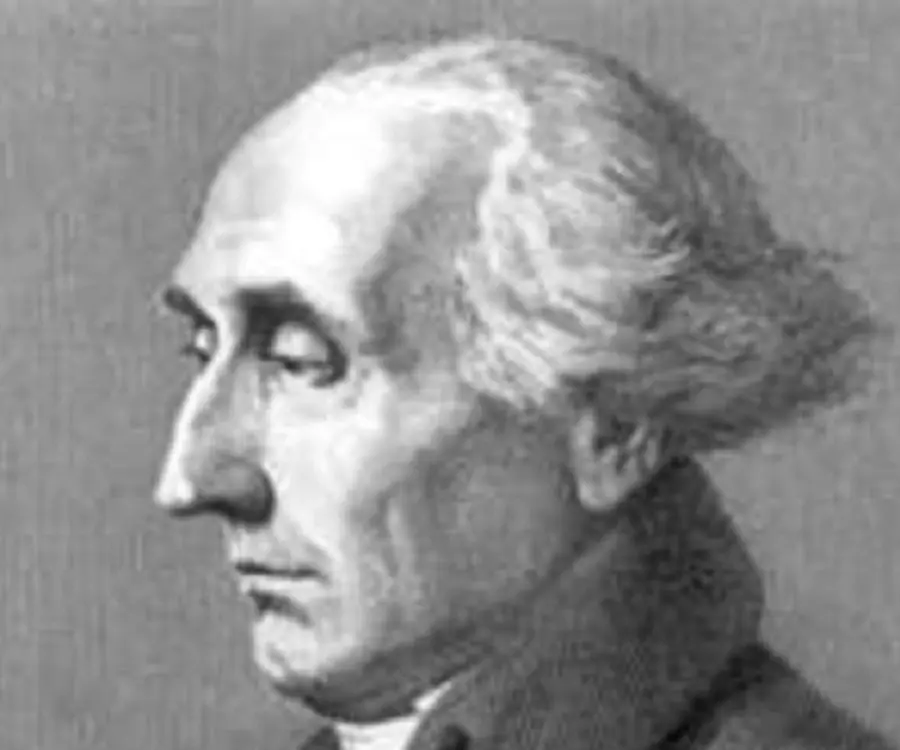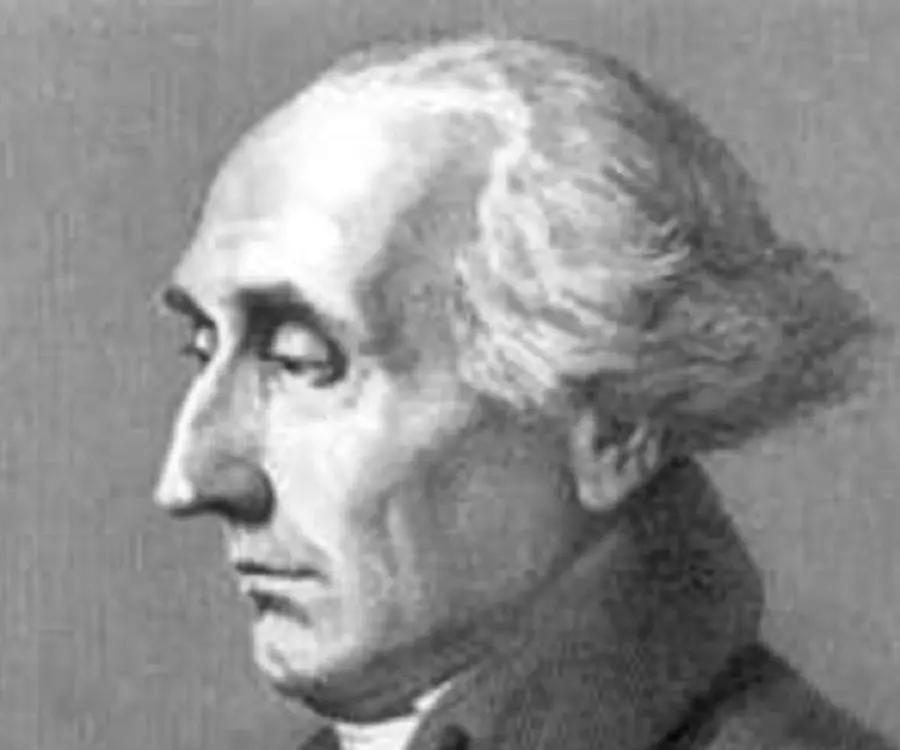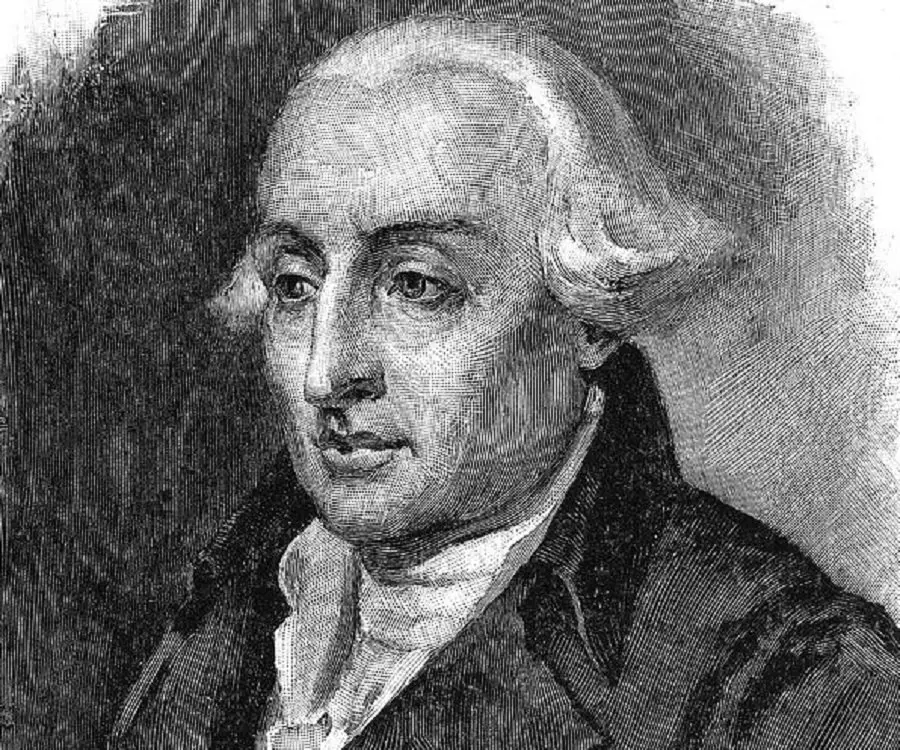
Joseph Louis Lagrange - Astronomers, Family and Childhood
Joseph Louis Lagrange's Personal Details
Joseph Lagrange was an accomplished Italian enlightenment era mathematician and astronomer This biography profiles his childhood, career, life, research and timeline.
| Information | Detail |
|---|---|
| Birthday | January 25, 1736 |
| Died on | April 10, 1813 |
| Nationality | French, Italian |
| Famous | Scientists, Mathematicians, Astronomers, Astronomers, Mathematicians |
| Universities |
|
| Discoveries / Inventions |
|
| Birth Place | Turin, Italy |
| Born Country | Italy |
| Gender | Male |
| Father | Giuseppe Francesco Lodovico Lagrange |
| Mother | Maria Theresa Gros |
| Sun Sign | Aquarius |
| Born in | Turin, Italy |
| Famous as | Mathematician and Astronomer |
| Died at Age | 77 |
// Famous Mathematicians
Brahmagupta
Brahmagupta was a highly accomplished ancient Indian astronomer and mathematician. This biography of Brahmagupta provides detailed information about his childhood, life, achievements, works & timeline.
Giovanni Domenico Cassini
Giovanni Cassini was a 17th century Italian mathematician, astronomer and astrologer. This biography of Giovanni Cassini provides detailed information about his childhood, life, achievements, works & timeline.
Pythagoras
Pythagoras of Samos was a Greek mathematician and philosopher. Read on to learn more about Pythagoras’s profile, childhood, life and timeline.
Joseph Louis Lagrange's photo
Who is Joseph Louis Lagrange?
Joseph Louis Lagrange was a famous mathematician and astronomer, born in Italy towards the beginning of the eighteenth century. His great- grandfather was French, who settled in Turin after marrying an Italian woman. As a result, Italy considers him to be an Italian while France claims that he was French. As a young man, Lagrange was sent to the University of Turin to study law but by a quirk of fate, he came across a paper by Edmond Halley, the English astronomer-cum-mathematician and became engrossed in it. Subsequently, he began to study mathematics on his own. His fist paper was published at the age of eighteen and by nineteen he became assistant professor of mathematics at the Royal Military Academy, Turin. Later he was invited to Berlin Academy, where he served for twenty years. Thereafter, he joined Académie des Sciences, Paris, on the invitation of Louis XVI and remained there till the end of his career. He was honored by both the aristocracy and the revolutionary governments that took over the reign after the French Revolution. He was made a Senator by Napoleon.
// Famous Astronomers
Brahmagupta
Brahmagupta was a highly accomplished ancient Indian astronomer and mathematician. This biography of Brahmagupta provides detailed information about his childhood, life, achievements, works & timeline.
Giovanni Domenico Cassini
Giovanni Cassini was a 17th century Italian mathematician, astronomer and astrologer. This biography of Giovanni Cassini provides detailed information about his childhood, life, achievements, works & timeline.
Hipparchus
Hipparchus was a Greek astronomer and mathematician. This biography profiles his childhood, life, achievements and timeline.
Childhood & Early Life
Joseph Louis Lagrange was born Giuseppe Lodovico Lagrangia on 25 January, 1736 in Turin, Italy. His father, Giuseppe Francesco Lodovico Lagrangia, worked as a Treasurer in the Office of Public Works and Fortifications in Turin. His mother, Teresa Grosso, was the daughter of a doctor from nearby town of Cambiano.
Lagrange was the eldest of his parent’s two surviving children. As a young man, he often used the French form of his family name, calling himself Lodovico LaGrange.
He enrolled at the University of Turin to study law.
Initially he did not show much interest in mathematics. In fact, he found Greek geometry rather dull and was more interested in Classic Latin. At the age of seventeen, he accidentally came across a paper on the use of algebra in optics by Edmond Halley. It opened a new world for him.
Alone and unaided, he began to study mathematics and within a year, became a skilled mathematician. On 23 July 1754, he published his first mathematical work in the form of a letter written to Italian mathematician Giulio Fagnano. In this work, he drew an analogy between the binomial theorem and the successive derivatives of the product of functions. Unfortunately, a month after the paper was published, he realized that the work had already appeared in correspondence between Johann Bernoulli and Leibniz.
Lagrange was greatly upset about this as he thought he would now be accused of plagiarism. He now started working even harder so as to produce genuine results.
Working on the problem of tautochrone, he made some important discoveries, which in later years contributed to the study of calculus of variations. On 12 August 1755, he sent the result of his work to Swiss mathematician, Leonhard Euler.
Career
On 28 September 1755, Lagrange was appointed as the ‘Sostituto del Maestro di Matematica’ (assistant professor in mathematics) at the Royal Military Academy of the Theory and Practice of Artillery by Charles Emmanuel III, the Duke of Savoy and the King of Sardinia. Thus he began his career at the age of 19.
At the Academy, he taught calculus and mechanics. Although he became well-known for the originality of his thoughts and depth of knowledge, his teaching style was not very popular. His abstract reasoning as well as his impatience with engineering applications also created problems.
In 1756, Lagrange applied calculus of variation to mechanism and sent the result to Leonhard Euler. Impressed, Euler showed the work to French mathematician, Pierre-Louis Moreau de Maupertuis, who at that time was the President of Berlin Academy.
Maupertuis was so impressed by Lagrange that he invited him to come to Prussia, offering better position than he had at Turin. However, he politely refused it, preferring to stay at Turin for the time being. Despite the refusal, Lagrange was elected to the Berlin Academy on 2nd September 1756.
In 1757, Lagrange formed a scientific society in Turin, which later came to known as Royal Academy of Sciences of Turin. It published a scientific journal called ‘Mélanges de Turin’, in which Lagrange sent regular contributions.
Lagrange’s work during this period covered a variety of topics, such as calculus of variations, calculus of probabilities and foundations of dynamics. Later, he also worked on fluid mechanics, linear differential equations, and propagation of sound as well as on orbits of planets like Jupiter and Saturn.
In 1762, Académie des Sciences of Paris announced prizes for works on lunar libration. Lagrange sent his entry in 1763 and then followed in person. He not only won the prize, but was also received with great honor.
Upon returning to Turin in 1765, he sent another entry for the Académie’s 1766 competition on the orbits of the moons of the Jupiter. His paper greatly impressed French mathematician, Jean lRond d'Alembert and on his recommendation, Frederick, the Great of Prussia offered him a position in the Berlin Academy.
Although Lagrange’s position at the Royal Academy in Turin did not change much but he refused the offer. The reason he gave was that he did not think Berlin would be suitable for him as M Euler was there.
Then in March 1766, Euler decided to leave for Saint Petersburg. Lagrange was once again offered the post. This time, he accepted the offer and on 6 November, 1766, he joined Berlin Academy, succeeding Euler as the Director of Mathematics.
For twenty years, Lagrange served Berlin Academy as its director. During this period, he also published important papers on regular basis and won many prizes from the Académie des Sciences of Paris. Over the years, he also won the mentorship of the king.
In 1781, he was invited to take up the position of the Director of Philosophy at the Naples Academy by the Count of Naples. However, Lagrange wanted to concentrate only on mathematics and the Berlin Academy gave him ample opportunity so he refused the offer.
In 1786, King Frederick the Great died and with that Lagrange’s position at the Berlin Academy became less comfortable as many of his colleagues had always envied him for he became director at such a young age. Many Italian states now tried to lure him back to Italy.
Around that time, he received an offer from Académie des Sciences, Paris, which exempted him from teaching. On 18 May 1787, he left Berlin for Paris and subsequently became a member of the Académie and remained there for the rest of his career.
When the French revolution broke out in 1789, all foreigners, except him, were ordered to leave; this was in spite of the fact, he had been close to the aristocracy.
In May 1790, Lagrange was made a member of the committee, whose job was to standardize weights and measures. When the École Centrale des Travaux Publics (later École Polytechnique) was opened in 1794, he became Gaspard Monge, its leading professor of mathematics.
Thereafter Lagrange continued in teaching position and at the same time continued publishing important papers. His last major work, ‘Leçonssur le calcul des fonctions’, was published in 1800.
Major Works
Lagrange is best known for his contribution to the development of the metric system. As President of la Commission des Poidset Mesures, he played a decisive role in taking up the unit system of meter and kilogram as well as their decimal subdivisions.
He is also considered as one of the founders of the calculus of variations. While working on the problem of tautochrone, he discovered a method of maximizing and minimizing functional, which led to development of calculus of variation.
‘Mécaniqueanalytique’, published in 1788, is another of his important work. He worked on this book for half a century and summarized all the work done in the field of mechanics since the time of Newton.
Awards & Achievements
Lagrange was awarded several prizes by the Académie des Sciences. In 1764, he received the prize for his work on lunar libration; in 1766, for his work on the orbit of the Jupiter’s moons and in 1780, for his work on perturbations of the orbits of comets.
Lagrange was elected a Member of the Berlin Academy in 1756, a Fellow of the Royal Society of Edinburgh in 1790, Fellow of the Royal Society and Foreign Member of the Royal Swedish Academy of Sciences in 1806.
In 1808, Lagrange was made a Grand Officer of the Legion of Honour and a Count of the Empire by Napoleon.
In 1813, a week before his death, he was awarded the Grand Croix of the OrdreImpérial de la Réunion.
Personal Life & Legacy
In 1767, Lagrange married his cousin Vittoria Conti. They did not have any children. From his letters to d'Alembert, some scholars have deduced that he did not wish to have any.
In 1783, Vittoria died after years of illness, leaving Lagrange very depressed.
In 1792, he married 24 year old Renee-Francoise-Adelaide Le Monnier, the daughter of his colleague, Pierre Charles Le Monnier. It is said that she insisted that he marry her and was very devoted until his death on 10 April, 1813 in Paris.
Trivia
Although Lagrange’s father worked at a high position he lost a lot of money in financial speculation as a result of which, the family was constantly under financial distress. Lagrange had later said, had they had enough money he would not have enrolled at Turin University and study mathematics.
// Famous Mathematicians
Grigori Perelman
Grigori Perelman is a Russian mathematician who is best known for his contributions to Riemannian geometry and geometric topology. Check out this biography to know about his childhood, family life, achievements and fun facts about him.
Terence Tao
Terence Tao is an Australian- American mathematician who has contributed enormously to the field of mathematics. Check out this biography to know about his childhood, family life and achievements.
Isaac Newton
Isaac Newton was an English scientist and mathematician, who discovered gravitation and Newtonian Mechanics. Read this biography to find more on his life.
Joseph Louis Lagrange biography timelines
- // 25th Jan 1736Joseph Louis Lagrange was born Giuseppe Lodovico Lagrangia on 25 January, 1736 in Turin, Italy. His father, Giuseppe Francesco Lodovico Lagrangia, worked as a Treasurer in the Office of Public Works and Fortifications in Turin. His mother, Teresa Grosso, was the daughter of a doctor from nearby town of Cambiano.
- // 23rd Jul 1754Alone and unaided, he began to study mathematics and within a year, became a skilled mathematician. On 23 July 1754, he published his first mathematical work in the form of a letter written to Italian mathematician Giulio Fagnano. In this work, he drew an analogy between the binomial theorem and the successive derivatives of the product of functions. Unfortunately, a month after the paper was published, he realized that the work had already appeared in correspondence between Johann Bernoulli and Leibniz.
- // 12th Aug 1755Working on the problem of tautochrone, he made some important discoveries, which in later years contributed to the study of calculus of variations. On 12 August 1755, he sent the result of his work to Swiss mathematician, Leonhard Euler.
- // 28th Sep 1755On 28 September 1755, Lagrange was appointed as the ‘Sostituto del Maestro di Matematica’ (assistant professor in mathematics) at the Royal Military Academy of the Theory and Practice of Artillery by Charles Emmanuel III, the Duke of Savoy and the King of Sardinia. Thus he began his career at the age of 19.
- // 1756In 1756, Lagrange applied calculus of variation to mechanism and sent the result to Leonhard Euler. Impressed, Euler showed the work to French mathematician, Pierre-Louis Moreau de Maupertuis, who at that time was the President of Berlin Academy.
- // 2nd Sep 1756Maupertuis was so impressed by Lagrange that he invited him to come to Prussia, offering better position than he had at Turin. However, he politely refused it, preferring to stay at Turin for the time being. Despite the refusal, Lagrange was elected to the Berlin Academy on 2nd September 1756.
- // 1757In 1757, Lagrange formed a scientific society in Turin, which later came to known as Royal Academy of Sciences of Turin. It published a scientific journal called ‘Mélanges de Turin’, in which Lagrange sent regular contributions.
- // 1762 To 1763In 1762, Académie des Sciences of Paris announced prizes for works on lunar libration. Lagrange sent his entry in 1763 and then followed in person. He not only won the prize, but was also received with great honor.
- // 1765 To 1766Upon returning to Turin in 1765, he sent another entry for the Académie’s 1766 competition on the orbits of the moons of the Jupiter. His paper greatly impressed French mathematician, Jean lRond d'Alembert and on his recommendation, Frederick, the Great of Prussia offered him a position in the Berlin Academy.
- // 6th Nov 1766Then in March 1766, Euler decided to leave for Saint Petersburg. Lagrange was once again offered the post. This time, he accepted the offer and on 6 November, 1766, he joined Berlin Academy, succeeding Euler as the Director of Mathematics.
- // 1767In 1767, Lagrange married his cousin Vittoria Conti. They did not have any children. From his letters to d'Alembert, some scholars have deduced that he did not wish to have any.
- // 1781In 1781, he was invited to take up the position of the Director of Philosophy at the Naples Academy by the Count of Naples. However, Lagrange wanted to concentrate only on mathematics and the Berlin Academy gave him ample opportunity so he refused the offer.
- // 1783In 1783, Vittoria died after years of illness, leaving Lagrange very depressed.
- // 1786In 1786, King Frederick the Great died and with that Lagrange’s position at the Berlin Academy became less comfortable as many of his colleagues had always envied him for he became director at such a young age. Many Italian states now tried to lure him back to Italy.
- // 18th May 1787Around that time, he received an offer from Académie des Sciences, Paris, which exempted him from teaching. On 18 May 1787, he left Berlin for Paris and subsequently became a member of the Académie and remained there for the rest of his career.
- // 1788‘Mécaniqueanalytique’, published in 1788, is another of his important work. He worked on this book for half a century and summarized all the work done in the field of mechanics since the time of Newton.
- // 1789When the French revolution broke out in 1789, all foreigners, except him, were ordered to leave; this was in spite of the fact, he had been close to the aristocracy.
- // May 1790 To 1794In May 1790, Lagrange was made a member of the committee, whose job was to standardize weights and measures. When the École Centrale des Travaux Publics (later École Polytechnique) was opened in 1794, he became Gaspard Monge, its leading professor of mathematics.
- // 1792 To 10th Apr 1813In 1792, he married 24 year old Renee-Francoise-Adelaide Le Monnier, the daughter of his colleague, Pierre Charles Le Monnier. It is said that she insisted that he marry her and was very devoted until his death on 10 April, 1813 in Paris.
- // 1800Thereafter Lagrange continued in teaching position and at the same time continued publishing important papers. His last major work, ‘Leçonssur le calcul des fonctions’, was published in 1800.
- // 1808In 1808, Lagrange was made a Grand Officer of the Legion of Honour and a Count of the Empire by Napoleon.
- // 1813In 1813, a week before his death, he was awarded the Grand Croix of the OrdreImpérial de la Réunion.
// Famous Scientists
Juliane Koepcke
Juliane Koepcke is a German-Peruvian biologist, who was the lone survivor among the 92 passengers and crew of the ill-fated LANSA Flight 508 that crashed in the Peruvian rainforest on 24 December 1971. Know more about her life in this biography.
Henry Cavendish
Henry Cavendish was a theoretical chemist and physicist, renowned for discovery of hydrogen and calculation of the mass of earth. To know more about his childhood, profile, timeline and career read on
Konstantin Tsiolkovsky
Konstantin Tsiolkovsky was a Russian rocket scientist and a pioneer of astronautics. This biography provides detailed information about his childhood, family, personal life, career, achievements, etc.
Gabe Newell
Gabe Newell is an American computer programmer and businessman, best known as the co-founder of ‘Valve Corporation.’ This biography provides detailed information about his childhood, family, personal life, career, etc.
Grigori Perelman
Grigori Perelman is a Russian mathematician who is best known for his contributions to Riemannian geometry and geometric topology. Check out this biography to know about his childhood, family life, achievements and fun facts about him.
Eduardo Saverin
Eduardo Luiz Saverin is a Brazilian internet entrepreneur and investor. This biography profiles his childhood, life, career, achievements, and timeline
Joseph Louis Lagrange's FAQ
What is Joseph Louis Lagrange birthday?
Joseph Louis Lagrange was born at 1736-01-25
When was Joseph Louis Lagrange died?
Joseph Louis Lagrange was died at 1813-04-10
Where was Joseph Louis Lagrange died?
Joseph Louis Lagrange was died in Paris, France
Which age was Joseph Louis Lagrange died?
Joseph Louis Lagrange was died at age 77
Where is Joseph Louis Lagrange's birth place?
Joseph Louis Lagrange was born in Turin, Italy
What is Joseph Louis Lagrange nationalities?
Joseph Louis Lagrange's nationalities is French, Italian
What was Joseph Louis Lagrange universities?
Joseph Louis Lagrange studied at École Polytechnique
What is Joseph Louis Lagrange's inventions/discoveries?
Calculus Of Variations was invented (or discovered) by Joseph Louis Lagrange
Who is Joseph Louis Lagrange's father?
Joseph Louis Lagrange's father is Giuseppe Francesco Lodovico Lagrange
Who is Joseph Louis Lagrange's mother?
Joseph Louis Lagrange's mother is Maria Theresa Gros
What is Joseph Louis Lagrange's sun sign?
Joseph Louis Lagrange is Aquarius
How famous is Joseph Louis Lagrange?
Joseph Louis Lagrange is famouse as Mathematician and Astronomer
